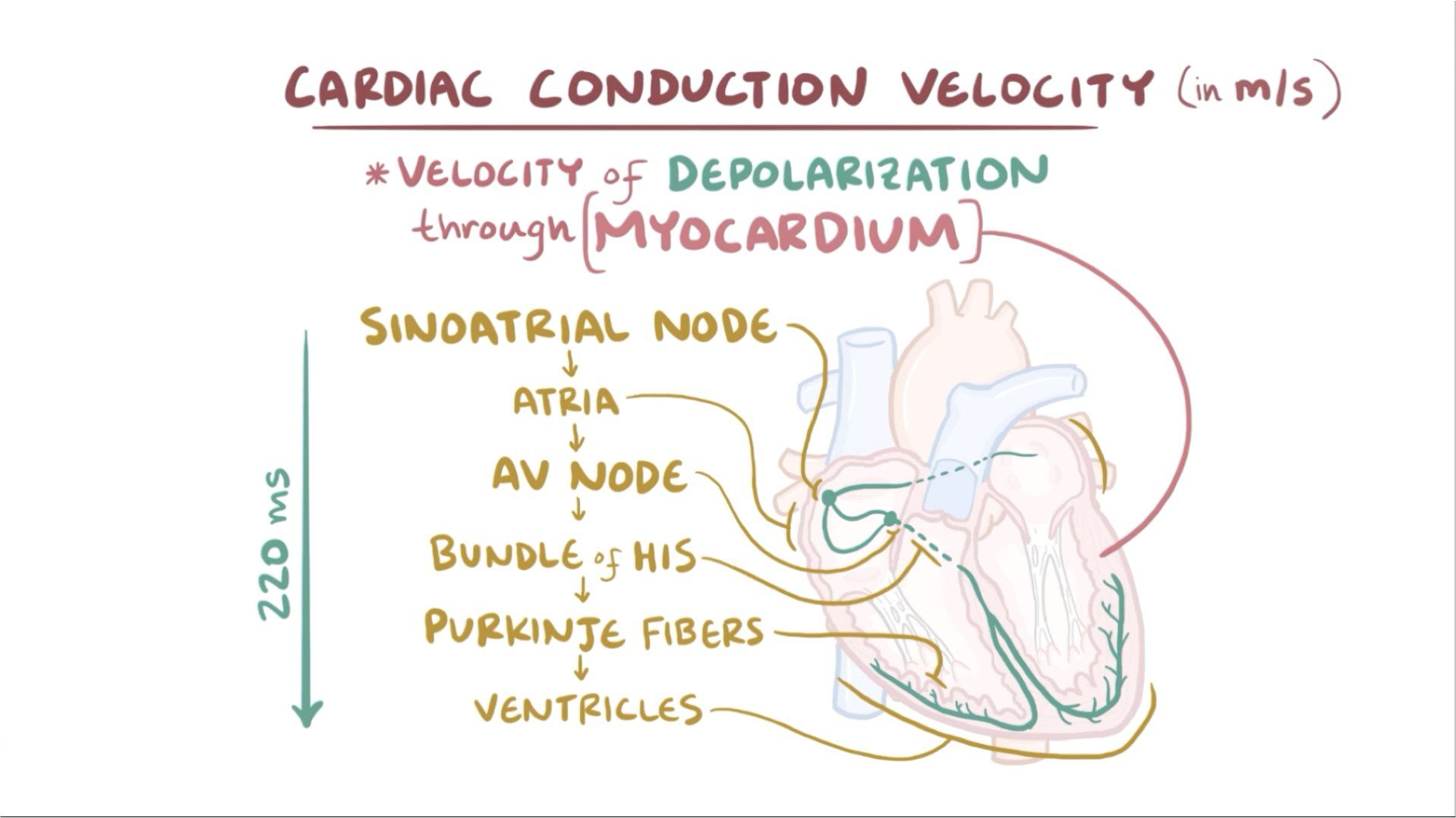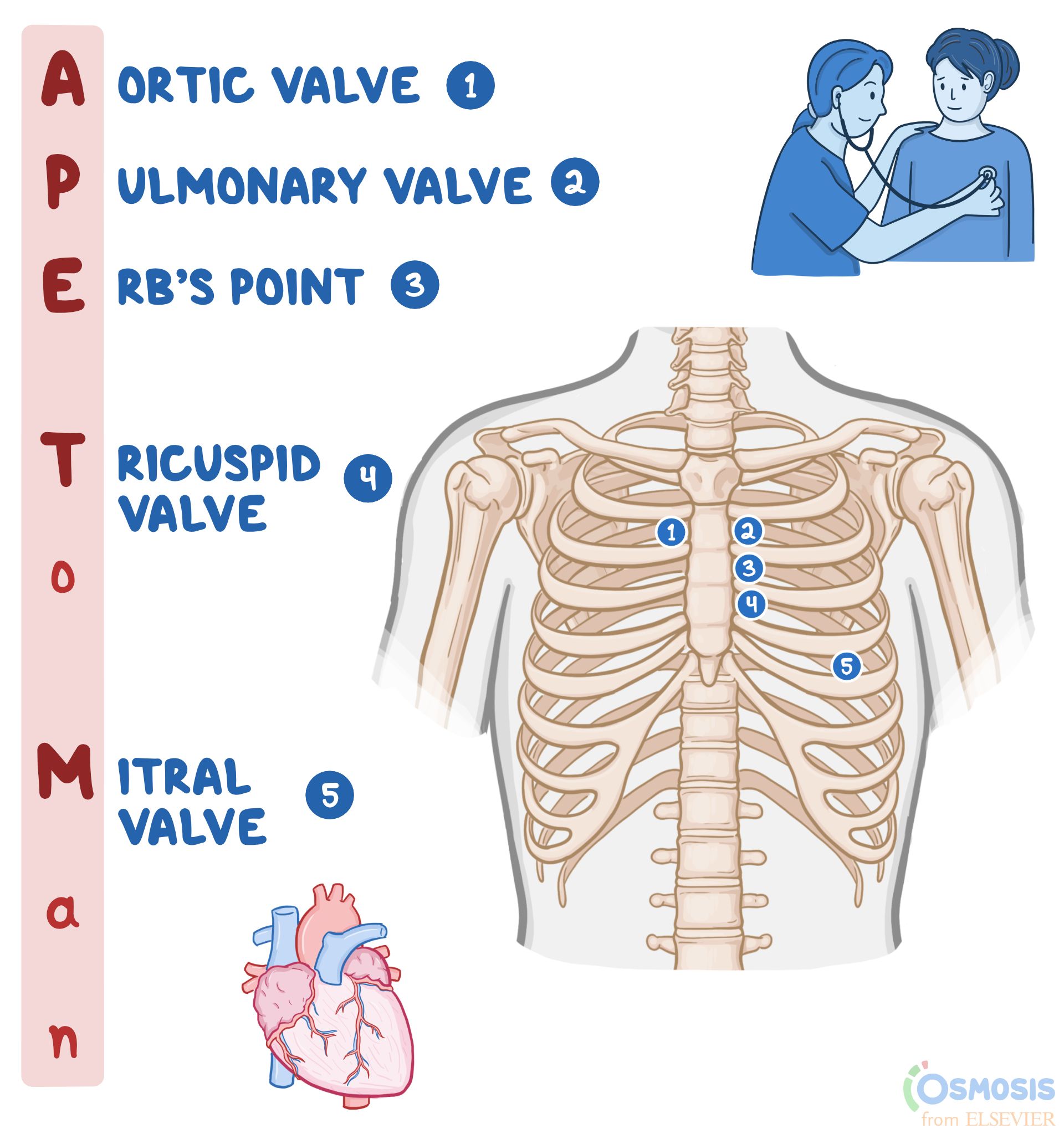RN Fundamentals - Exam 2
ATI RN Fundamentals - Exam 2
Total Questions : 46
Showing 10 questions Sign up for moreThe nurse is performing a respiratory assessment on a client. Which of the following findings should the nurse report to the practitioner?
Explanation
A. Clear and equal breath sounds bilaterally
Explanation: Clear and equal breath sounds bilaterally indicate normal lung sounds, suggesting proper air exchange in both lungs. This is a normal finding and does not require immediate reporting.
B. Oxygen saturation of 98% on room air
Explanation: An oxygen saturation level of 98% on room air indicates adequate oxygenation of the blood. This is a normal and healthy oxygen saturation level and does not require immediate reporting.
C. Cough producing clear, thin sputum
Explanation: A cough producing clear, thin sputum is indicative of a non-infected or non-inflammatory condition in the respiratory system. Clear and thin sputum is often normal, especially in the absence of other symptoms. It does not require immediate reporting unless the client has other concerning symptoms.
D. Visible use of accessory muscles during inhalation
Explanation: Visible use of accessory muscles, such as neck or intercostal muscles, during inhalation suggests that the client is working hard to breathe. This could indicate respiratory distress, potentially due to conditions like asthma, COPD (Chronic Obstructive Pulmonary Disease), or other severe lung problems. It's a concerning sign and should be reported to the healthcare practitioner promptly for further evaluation and intervention.
Which of the following assessment findings should the nurse report to the practitioner? (Select all that apply)
Explanation
A. Use of accessory muscles
Explanation: Using accessory muscles during breathing indicates increased effort to breathe, which can be a sign of respiratory distress. It suggests that the client is having difficulty breathing and is using additional muscles to aid in the process. This finding should be reported to the practitioner for further evaluation.
B. Nail bed greater than 160 degrees
Explanation: A nail bed angle greater than 160 degrees, also known as clubbing, is an abnormal finding and can be associated with chronic respiratory or cardiovascular conditions. It may indicate insufficient oxygenation and should be reported to the practitioner for evaluation.
C. Circumoral cyanosis
Explanation: Circumoral cyanosis, which is a bluish discoloration around the mouth, indicates inadequate oxygenation. It can be a sign of respiratory or cardiac problems and should be reported to the practitioner for further assessment and intervention.
D. Pursed lip breathing
Explanation: Pursed lip breathing is a technique often used by individuals with respiratory difficulties to improve oxygen exchange. However, if it's observed in a person who does not normally use this technique, it could indicate respiratory distress and should be reported to the practitioner for evaluation.
E. Anteroposterior-to-transverse diameter of 1:1
Explanation: An anteroposterior-to-transverse diameter of 1:1 (also known as barrel chest) is an abnormal finding often associated with chronic obstructive pulmonary disease (COPD). It suggests overinflation of the lungs and can impair effective breathing. This finding should be reported to the practitioner for further evaluation.
A group of nursing students are studying the conduction system of the heart. The nursing students should recognize that the pacemaker of the heart is known as
Explanation
The pacemaker of the heart is known as the sinoatrial (SA) node. The SA node is a specialized group of cells located in the right atrium of the heart. It generates electrical impulses that initiate each heartbeat and set the rhythm for the entire heart.

The nurse is assessing the heart sounds of a client. The nurse understands that to listen to the pulmonic valve, the stethoscope should be placed where?
Explanation
A. Fifth intercostal space, left of the midclavicular line: This placement is used to auscultate the mitral valve, which is best heard at the apex of the heart. The mitral valve sounds are typically heard around the fifth intercostal space, midclavicular line.
B. Left lower sternal border: This placement is used to auscultate the tricuspid valve, which is best heard at the lower left sternal border.
C. Second left intercostal space: This is the correct placement for auscultating the pulmonic valve. The pulmonic valve sounds are best heard at the second left intercostal space, which is close to the upper left sternal border.
D. Second right intercostal space: This placement is used to auscultate the aortic valve, which is best heard at the second right intercostal space, close to the upper right sternal border.

The nurse is caring for an older adult client who has recently had a stroke. The nurse assesses that the right side of the client's face is drooping. The nurse might also expect which of the following assessment findings?
Explanation
A. Xerostomia: Xerostomia refers to dry mouth, which is caused by reduced saliva production. While it can be a symptom of various conditions, it is not directly associated with facial drooping after a stroke.
B. Epistaxis: Epistaxis is a medical term for a nosebleed. It occurs due to the rupture of small, delicate blood vessels within the nose. While it can happen independently of a stroke, it is not directly related to facial drooping caused by a stroke.
C. Dysphagia: Dysphagia refers to difficulty in swallowing, which can occur after a stroke due to muscle weakness, including the facial muscles. Facial drooping on one side can be indicative of stroke-related muscle weakness and can contribute to difficulties in swallowing.
D. Rhinorrhea: Rhinorrhea is the medical term for a runny nose, where the nasal cavity is filled with a significant amount of mucus. It is usually caused by various factors such as allergies, infections, or irritants. Rhinorrhea is not directly associated with facial drooping after a stroke.
The nurse is inspecting the anterior chest of an adult client. The nurse recognizes that which of the following should be included in the assessments?
Explanation
. Presence of breath sounds: While assessing the anterior chest, the nurse should listen for breath sounds over various areas of the lungs. However, this is related to auscultation, not inspection.
B. Diaphragmatic excursion: Diaphragmatic excursion involves assessing the movement of the diaphragm during breathing. This is typically done by percussing the level where dullness changes to resonance during inhalation and exhalation. It is more related to percussion, not inspection.
C. Symmetric chest expansion: Symmetric chest expansion refers to the equal expansion of both sides of the chest during inhalation. The nurse can observe and palpate the chest to assess if it expands symmetrically on both sides. This is a crucial aspect of the inspection of the anterior chest.
D. Shape and configuration of the chest wall: The shape and configuration of the chest wall, including abnormalities or deformities, should be assessed during inspection. This includes observing for any asymmetry, deformities, masses, or scars on the anterior chest.
The nurse is performing a breast exam on a client. The client asks the nurse why the left breast is slightly larger than the right breast. Which of the following should be the appropriate response by the nurse?
Explanation
A. A slight asymmetry in breast size can be expected: This response is accurate. It acknowledges the natural variation in breast size that many women experience. It's common for one breast to be slightly larger or shaped differently than the other. It assures the client that this asymmetry is normal and not a cause for concern.
B. Asymmetry of breast size and shape is probably due to breastfeeding and is nothing to worry about: While breastfeeding can cause temporary changes in breast size and shape, not all cases of breast asymmetry are related to breastfeeding. This statement might not cover all situations, making it less accurate.
C. A sudden uneven increase in breast size is normal in adults: This statement is not accurate. Sudden changes in breast size should always be investigated, as they can indicate underlying health issues and may not be considered normal.
D. Breasts should always be symmetric: This statement is not accurate. Perfect symmetry in breast size and shape is rare. Most women have some degree of asymmetry, which is entirely normal. It's important to reassure the client that slight differences are common and not a cause for concern.
The nurse is listening to the heart sounds of a client. The nurse recognizes that the S2:
Explanation
A. Indicates the beginning of diastole: This statement is not accurate. S2, the second heart sound, indicates the end of systole and the beginning of diastole. It is specifically associated with the closure of the aortic and pulmonary valves.
B. Coincides with the carotid artery pulse: This statement is not accurate. S2 is associated with the closure of the aortic and pulmonary valves in the heart, not with the carotid artery pulse.
C. Is louder than an S1: This statement is not accurate. S1, the first heart sound, is usually louder than S2. S1 is associated with the closure of the mitral and tricuspid valves and marks the beginning of systole.
D. Is caused by the closure of the semilunar valves: This statement is accurate. S2 is caused by the closure of the aortic and pulmonary valves, which are the semilunar valves in the heart. It marks the end of systole and the beginning of diastole.

The nurse is doing an assessment of an adult client and noticed unequal chest expansion. The nurse recognizes that unequal chest expansion occurs:
Explanation
A. When part of the lung is obstructed or collapsed: This statement is accurate. Unequal chest expansion can occur when part of the lung is obstructed or collapsed, preventing the affected area from expanding normally during inhalation.
B. When bulging of the intercostal spaces is present: This statement is not accurate. Unequal chest expansion typically refers to decreased expansion on one side, not bulging of intercostal spaces.
C. In an obese patient: This statement is not accurate. Obesity can affect breathing patterns and lung function, but it is not the primary cause of unequal chest expansion.
D. When accessory muscles are used to augment respiratory effort: This statement is not accurate. The use of accessory muscles to augment respiratory effort can be a sign of respiratory distress, but it doesn't directly cause unequal chest expansion. Unequal expansion is more indicative of specific lung conditions or issues with lung mechanics.
The nurse examines a client's auditory canal and tympanic membrane with an otoscope. The nurse recognizes that which of the following is considered an abnormal finding?
Explanation
A. A shiny, pearly white color tympanic membrane: This is a normal finding. A healthy tympanic membrane often appears shiny and pearly white.
B. The presence of cerumen: This is a normal finding. Cerumen, or earwax, is a natural substance that helps protect the ear canal.
C. The presence of a cone of light: This is a normal finding. The cone of light is a reflection of the otoscope light on the tympanic membrane and is a normal variation.
D. A yellow or amber color to the tympanic membrane: This is considered an abnormal finding. A yellow or amber coloration of the tympanic membrane can indicate the presence of fluid or infection behind the eardrum, which may be a sign of otitis media or other ear conditions.

You just viewed 10 questions out of the 46 questions on the ATI RN Fundamentals - Exam 2 Exam. Subscribe to our Premium Package to obtain access on all the questions and have unlimited access on all Exams. Subscribe Now



